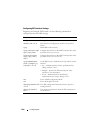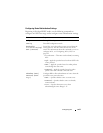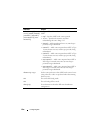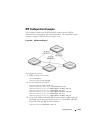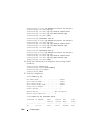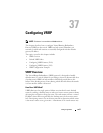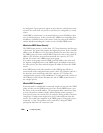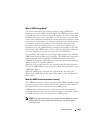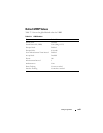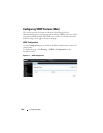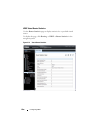
1218 Configuring VRRP
be configured. A given port may appear as more than one virtual router to the
network, also, more than one port on a switch may be configured as a virtual
router.
With VRRP, a virtual router is associated with one or more IP addresses that
serve as default gateways. In the event that the VRRP router controlling these
IP addresses (formally known as the master) fails, the group of IP addresses
and the default forwarding role is taken over by a Backup VRRP router.
What Is the VRRP Router Priority?
The VRRP router priority is a value from 1–255 that determines which router
is the master. The greater the number, the higher the priority. If the virtual IP
address is the IP address of a VLAN routing interface on one of the routers in
the VRRP group, the router with IP address that is the same as the virtual IP
address is the interface owner and automatically has a priority of 255. By
default, this router is the VRRP master in the group.
If no router in the group owns the VRRP virtual IP address, the router with
the highest configured priority is the VRRP master. If multiple routers have
the same priority, the router with the highest IP address becomes the VRRP
master.
If the VRRP master fails, other members of the VRRP group will elect a
master based on the configured router priority values. For example, router A is
the interface owner and master, and it has a priority of 255. Router B is
configured with a priority of 200, and Router C is configured with a priority of
190. If Router A fails, Router B assumes the role of VRRP master because it
has a higher priority.
What Is VRRP Preemption?
If preempt mode is enabled and a router with a higher priority joins the VRRP
group, it takes over the VRRP master role if the current VRRP master is not
the owner of the virtual IP address. The preemption delay controls how long
to wait to determine whether a higher priority Backup router preempts a
lower priority master. In certain cases, for example, during periods of network
congestion, a backup router might fail to receive advertisements from the
master. This could cause members in the VRRP group to change their states
frequently, i.e. flap. The problem can be resolved by setting the VRRP
preemption delay timer to a non-zero value.



